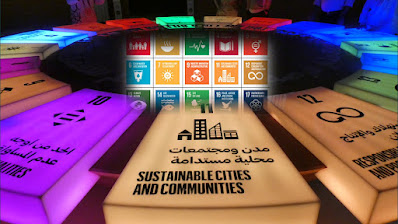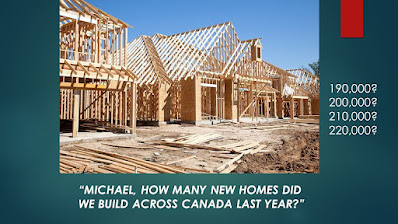Modular housing has quietly become a cost effective, not to mention dignified, way to house homeless people, as evidenced by a two-year-old City of Toronto program.
But to understand why modular housing is poised to become a resounding success in Canada’s largest city, one need only look at Vancouver, where it was first implemented. According to the creator of modular, or factory-produced, housing, its size, portability, and the method of production, prevents costs from ballooning
“Modular housing can be relocated; I thought of it as an idea that might well work, and it did,” said Vancouver-based Michael Geller, now a planning and development consultant for residential, mixed-use and large-scale planned communities.
“Normally in construction, you have consultants’ fees, but in this case there are no architects fees for every unit and you don’t have the costs of going through the approvals process. The standard module is produced in a factory. All of the Vancouver projects are virtually identical and you avoid property taxes during construction, the insurance costs are less, the legal costs are less, the soft costs on a project are often in the order of 20% of hard costs, and one cost you don’t have is the land cost.”
Modular housing typically sits on a site using steel screws for a period of time before being uprooted elsewhere. If it uses city lands, Geller says there are no costs, and if it is private land, such as a vacant parcel where a condominium will be built in a few years, property tax abatements can be proffered to owners as inducements.
“They need to be in a location for at least three years to justify some of the infrastructural costs,” Geller said. “You just found a vacant piece of land and the idea is you would put them up and when it’s time to move them, you wouldn’t want to have too much to tear up, like you would a concrete basement or concrete footing.”
An Idea With Torontonian Roots
The idea for modular housing is not new. Decades ago, it was Geller’s thesis topic at the University of Toronto School of Architecture — the steel screws were even an idea given to him by a professor — but it wasn’t until Geller ran for Vancouver city council in 2008 that the idea was adopted by the eventual mayor, Gregor Robertson. However, because Geller ran for the Non-Partisan Association and Robertson was a Vision Vancouver candidate, the latter was reluctant to implement the idea as a way to tackle homelessness, but it was one of his campaign pledges and meritocracy carried the day.
The Canada Mortgage and Housing Corporation subsequently funded a demonstration project, following a positive study from BC Housing. Nearly a decade later, the first units were delivered near Vancouver’s infamous Downtown Eastside, and, to date, over 800 modular housing units have been built in the province.
Former BC Premier Gordon Campbell, who used to work for a railway company, was reticent about the project because he believed the units looked like rail cars, Geller recalls, adding that resistance to a project intended to house the city’s homeless was often confounding.
“At first, the local housing activists opposed it because they feared they would look awful, and then afterwards they opposed it because they realized it looked too nice and their fear was it would replace permanent housing,” he said.
“To make [the inaugural modular homes] more attractive, we put a giant First Nations mural on the side. My study suggested they only go to two storeys but they actually went to three storeys. We talk about it being temporary, but there’s nothing more permanent than a temporary structure.”
“They Have a Front Door They Can Lock.”
The units averaged about 240 sq. ft. and contained everything a regular studio apartment has, including a bathroom and a kitchen. Geller remembers residents being interviewed on televised news segments and seeing tears in some of their eyes. Someone who’s been living on the streets for 20 years doesn’t believe such circumstance will ever change, he says, but modular housing can disabuse them of such notions.
The City of Toronto has already delivered two modular housing developments, and four more are in the pipeline. Toronto’s modular housing units are larger at 350-400 sq. ft., and each development has over 50 units. Moreover, non-profit organizations offer landlord services and each resident has security of tenure, meaning there’s no limit to how many times their leases can be renewed, and in addition to each resident receiving a case worker, the buildings have staff who are present 24 hours a day, seven days a week.
“For the first sites we have opened, there have been a couple of people who were interviewed after they moved in, and it’s really positive, really life-changing,” said Abigail Bond, Executive Director of the Housing Secretariat for the City of Toronto. “They have a front door they can lock. There’s real security and a place where they can leave their buildings knowing their things will be there when they get back. It really makes a huge difference for people.”
Unlike in Vancouver, the sites are permanent in Toronto. As a way to expedite the Housing TO 2020-2030 Action Plan, a separate plan was created in June 2020 to deliver 3,000 new supportive homes in 24 months, 1,000 of which will be delivered through the Canada-Ontario Housing Benefit.
“We’re on track to complete all of that by the end of 2022 and create more than 2,000 units. They’re a mixture of rapid housing created through Toronto Community Housing units, new modular, and also we bought some hotels as well. All of this will be supportive housing and much of it has been paid for by the federal government through the Rapid Housing Initiative they have introduced across Canada.”
Construction costs for individual units vary by their size, but Bond says they average roughly $200,000 in Toronto. The Housing Secretariat is hoping for an additional round of federal funding.
Because modular housing is inherently affordable, Geller says it doesn’t have to be built exclusively for homeless people. He also warns that if the modular housing developments contain certain clusters — in this case, homeless people — the concentration could introduce troubling behaviours, like drug use, and compromise all of the progress made. Geller envisions modular housing containing a cross-section of vulnerable people, including single parents.
“There is potential to use this idea, especially as the modular housing industry becomes more sophisticated, as a form of affordable housing that can indeed be set up on a site for three years, five years, and then move it to another site,” Geller said. “The units won’t need to be privately owned; they could be owned by a housing corporation, or a non-profit could look after it, but there do have to be support services and these things do have to be managed, especially if it’s predominantly former homeless people living in it, but I think we should mix it up.”
Neil Sharma



















































